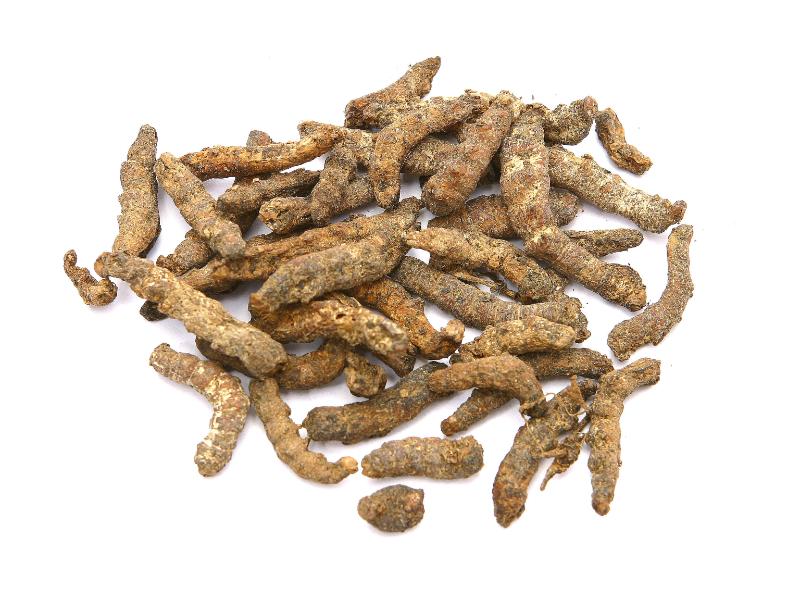Search in medicinals
Bombyx Batryticatus
Silkworm
僵蚕 〔僵蠶〕 jiāng cán

Alternate English names: dead infested silkworm
Alternate Chinese names: 白僵蚕 bái jiāng cán; 天虫 tiān chóng; 白殭蚕 bái jiāng cán; 僵蚕 jiāng cán; 殭蚕 jiāng cán; 蚕虫 cán chóng
Kingdom: Animal
Origin in PRC Pharmacopoeia: Bombyx mori L.; Beauvaria bassiana (Bals.) Vuill. (PRC Pharmacopoeia)
Origin in unofficial sources: Bombyx mori L.*; Beauvaria bassiana (Bals.) Vuill.*; Batrytis bassiana Bals. [=Beauvaria bassiana (Bals.) Vuill.]
Use: Medicinal
Category: Liver-calming wind-extinguishing agents / Wind-extinguishing tetany-relieving agents
Properties: Salty, acrid; balanced.
Channel entry: Liver and lung channels.
Actions and indications:
- Extinguishes wind and checks tetany: Convulsions from liver wind stirring internally.
- Dispels wind and frees the network vessels: Wind stroke hemiplegia and deviated eyes and mouth.
- Dispels wind and relieves pain: Headache, red eyes, sore throat, and itchy wind papules (rubella, German measles) due to wind-heat.
- Transforms phlegm and disperses binds: Phlegm nodes; scrofula.
- Additional uses: Jiāng cán may be used to treat mastitis, mumps (epidemic parotitis), clove sores, or swollen welling-abscesses by combining it with Jīn yín huā (金银花 Lonicerae Flos, lonicera [flower]), Lián qiào (连翘 Forsythiae Fructus, forsythia [fruit]), Bǎn lán gēn (板蓝根 Isatidis Radix, isatis root), or Huáng qín (黄芩 Scutellariae Radix, scutellaria [root]).
Dosage and method: Oral: 3–10g in decoctions. If swallowed as a powder, each dose should be 1–1.5g. The raw form is preferred for dispersing wind-heat, but the processed form is preferred for all other applications.
Quality: Fat hard white larvae that are shiny on the cross section are the best.
Production area: Zhèjiāng, Jiāngsū, Sìchuān, Guǎngdōng, and Shǎnxī (Shaanxi) in China as well as Korea and Japan.
Back to search result Previous Next